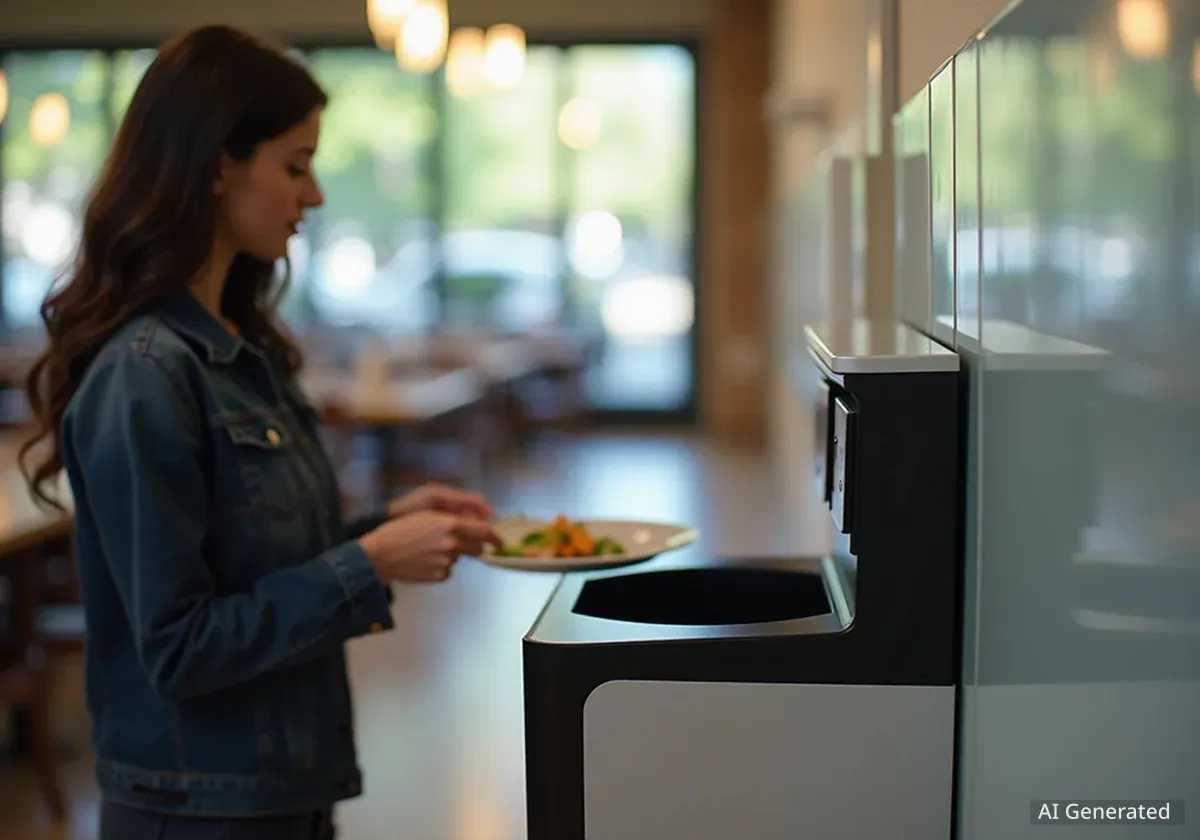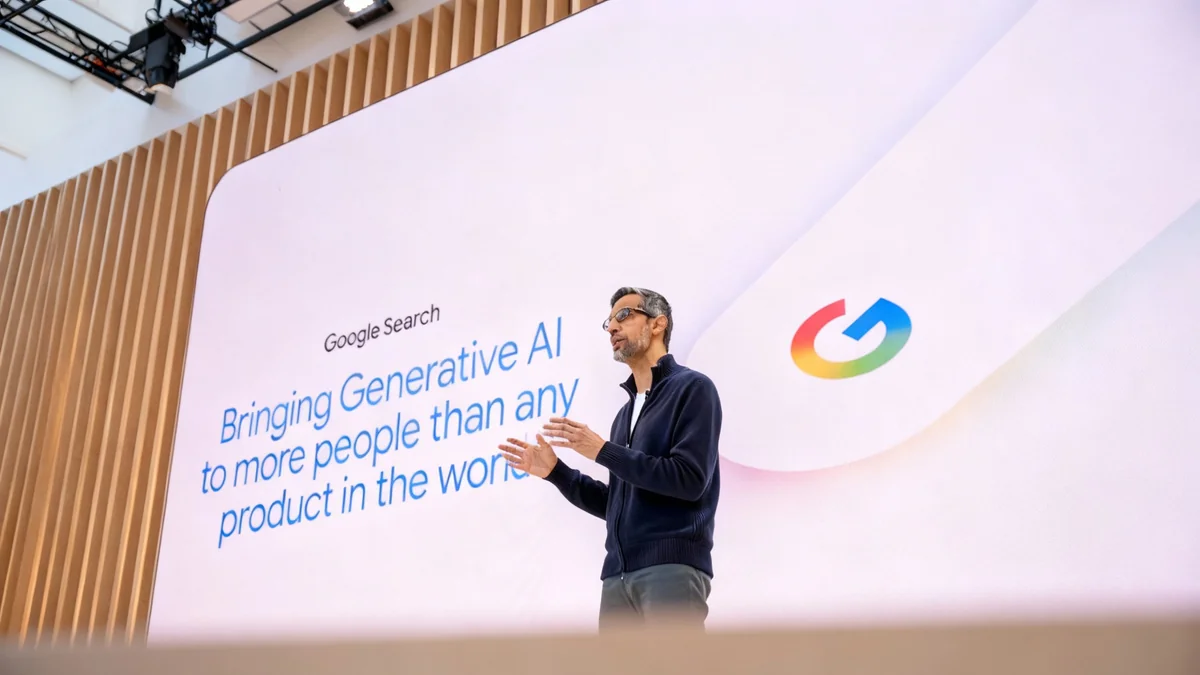Harvard University Dining Services (HUDS) has initiated a pilot program using an artificial intelligence system to reduce food waste in its kitchens. The technology, developed by Winnow, is currently active in three campus dining halls: Adams House, Currier House, and Annenberg Hall. The university aims to use the data collected to optimize food production and significantly cut down on waste generated by its buffet-style service.
The system analyzes food scraps to identify overproduced menu items, providing precise data that was previously unavailable. Early results have already led to adjustments in food preparation, and HUDS has set an internal goal of reducing kitchen production waste by 15 percent.
Key Takeaways
- Harvard University is testing an AI system named Winnow in three dining halls to combat food waste.
- The technology uses a smart camera and a scale to identify and weigh discarded food items.
- An early finding from the system identified rice as the most commonly overproduced food item.
- The university has set a goal to reduce kitchen-level food waste by 15 percent.
- The pilot program will be evaluated in late 2025 to determine if it will be expanded across campus.
A New Approach to Kitchen Management
Harvard University Dining Services is addressing the challenge of food waste inherent in its all-you-can-eat service model. To improve efficiency, HUDS is leveraging artificial intelligence through a new partnership with the technology company Winnow.
"When it came to environmental sensitivity, food waste was an area we knew we would like to mature our own systems and practices for effectiveness and efficiency," said Smith Haneef, the managing director of HUDS. The objective was to find a solution that was both accurate and simple for dining hall staff to use.
The Challenge of Buffet Service
All-you-can-eat dining models, common in university settings, often lead to significant food waste. Predicting student consumption for a wide variety of menu items is difficult, frequently resulting in overproduction. This creates both economic and environmental costs for the institution.
The selection of Winnow followed a thorough review process. According to Martin Breslin, director for culinary operations, HUDS interviewed four to five different organizations offering similar technologies. The final decision was based on specific criteria aimed at practical implementation.
"After interviewing these companies, we picked Winnow on a couple of criteria, and one is that it has to be easy to use for our staff. It also has to produce very good, accurate data," Breslin stated.
How the AI System Works
The Winnow system integrates hardware and software to create a detailed picture of food waste. It combines a floor scale with a smart camera positioned over the compost bin. When staff discard non-donatable food scraps, the system weighs the waste and captures an image.
The AI then analyzes the image to identify the specific menu item being thrown away. This process replaces the previous method of tracking waste, which relied on handwritten production records. Breslin described the old system as "cumbersome" and noted the significant improvement in accuracy and ease of data collection.
"Winnow takes all of that off the team and makes it so easy and much more accurate to gather information," he added. This automated data gathering allows kitchen staff to focus on their primary culinary duties while still contributing to waste reduction efforts.
Human Oversight and AI Accuracy
While the AI is powerful, it is not infallible. Smith Haneef acknowledged that the system sometimes makes identification errors. "Did the vision AI from Winnow truly capture the ingredient or the item, or is it something else, like, is it macaroni and cheese, or is it chicken noodle soup? There have been some errors," Haneef explained.
To address this, the system includes a crucial human element. At the end of each shift, staff review the AI's classifications and make necessary corrections. Haneef described this as "another source of enablement of quick feedback loops to correct the AI or the smart camera." This collaborative process helps refine the AI's accuracy over time.
Early Data Leads to Immediate Changes
Within the first three weeks of the pilot program, the data from Winnow has already yielded actionable insights. The system provides quantitative evidence of overproduction, confirming what staff may have only suspected before.
"The number one actually is rice," Breslin revealed. "We saw it across the three locations and that was a very easy fix — like immediate." By having precise data, dining services can adjust production levels for specific items to better match student demand.
Streamlining the Menu
In addition to using AI, HUDS has also shortened its menu cycle from four weeks to three. This change reduces the number of items in inventory, which can contribute to waste. The more concise menu focuses on student favorites, further improving production efficiency.
The new, shorter menu cycle complements the data-driven approach of the Winnow system. "The four week cycle really stretches and adds lots of items to inventory and so on, which can actually add to increasing waste," Breslin said. "So the three week cycle menu is actually more efficient."
Future Goals and Expansion Plans
Harvard Dining Services has established a clear target for the pilot program's success. "The hard internal goal that we’ve set is could we achieve 15 percent food waste production at the kitchen production level," Haneef stated.
The current pilot phase is scheduled to be reassessed on December 20, 2025. Based on the results at the end of the fall semester, HUDS will decide whether to expand the Winnow system to its other dining halls across the university.
Haneef expressed a "high degree of confidence" in the technology's potential for broader implementation. If the 15 percent reduction goal is met or exceeded, the university plans to move forward with scaling the initiative. "If that’s true, we’re gonna have a follow up project team meeting, and we want to scale that again," she concluded.





